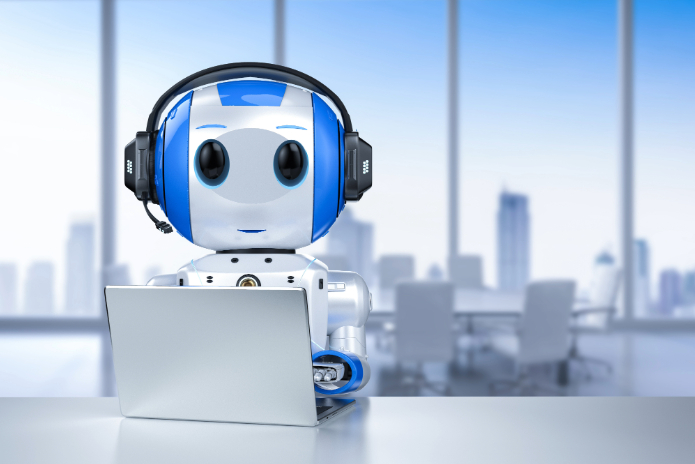Jitterbit, a global company accelerating business transformation for enterprise systems, announced new capabilities with artificial intelligence to build, integrate, connect and manage thousands of enterprise data processes and flows.This comprehensive, layered approach to AI enables companies to unify data silos, control AI proliferation, and simplify supplier glut, paving the way for true business transformation.
“The biggest challenge in AI-driven automation today is not the technology itself, but the proliferation of disconnected tools, agents and vendors that create more chaos than” solutions, he said Bill Conner, President and CEO of Jitterbit. “A Jitterbit solved this by offering the first platform that unifies the entire automation lifecycle - from building intelligent applications, connecting them to agents, exposing them as APIs, to seamlessly integrating everything in the enterprise.
As part of the global Jitterbit Accelerate events, which take place in London e Frankfurt on September 17 and 19, respectively, the Jitterbit CTO, Manoj Chaudhary, Introducing the new Jitterbit iPaaS AI Assistant & the industry's first AI assistant that connects endpoints securely using only natural language processing.
“We are pushing the boundaries of what is possible in enterprise automation”, said Chaudhary.“A Jitterbit is fundamentally changing the way companies approach automation with AI, making complex orchestration accessible to everyone, and enabling our customers to unlock incredible efficiency in their environments by connecting isolated data, AI agents, and automated, integrated business processes
Though 92% of companies plan to increase their AI investments over the next three years, many AI projects fail due to lack of skills, undefined AI strategies, unrealistic business use cases, and fragmented environments.Jitterbit's new solutions are designed to address these challenges directly, making automation with AI more practical, effective, and aligned with the real needs of companies.
“A Jitterbit Harmony is at the heart of our” AI journey, said Ankur Budhiraja, Director of Software Engineering at Keysight Technologies, a Jitterbit customer. “It has enabled us to build AI agents capable of easily interacting with our complex enterprise systems & increasing efficiency, spurring innovation and ensuring accountability across the enterprise.”
From App to Agent: Jitterbit paves the way for AI automation
With this innovation, organizations can build an agent in Jitterbit Studio or get a verified agent in Jitterbit Marketplace; expose the agent as an API using Jitterbit API Manager; and utilize the agent in any web, mobile, or system application developed with Jitterbit App Builder (using low-code or AI assistant).
By enabling companies to integrate custom AI agents directly into their applications, we are offering a powerful way to expand app functionality, increase data-driven value, and transform a standard application into a complete, AI-powered enterprise experience”, Chaudhary said.
Jitterbit also gives you the freedom to connect to any AI model, ensuring organizations have full control over their AI strategy. Integrations with OpenAI, OpenAI Azure and Amazon Bedrock are now available, with Gemini and Llama coming soon.
Trusted AI agents now available on Jitterbit Marketplace
Jitterbit is also launching the first set of fully autonomous AI agents on the Jitterbit Marketplace.This allows organizations to leverage prebuilt and verified agents to accelerate their automation journey.New agents include:
- Jitterbit Sales Agent Empower sales teams with instant access to detailed account information including contact details, location, business size, contract value, account health, and more. Jitterbit Sales Agent is now available in the Marketplace.
- Jitterbit Knowledge Agent This flexible internal agent can be implemented to provide employees with access to internal knowledge bases, documentation sites, enterprise systems, and other data repositories. The Jitterbit Knowledge Agent is now available in the Marketplace.
- Jitterbit HR Agent Scheduled for the third quarter, this agent will automate HR processes such as employee onboarding, role-based training plans, IT support, and software and hardware acquisition.
Customers can also outsource the development of personalized, specific and responsible AI agents through the Agentic AI Professional Services by Jitterbit, announced in May 2025.
Increasing AI efficiency and security with the new MCP client
The new client Model Context Protocol (MCP) from Jitterbit, it offers standardized, secure and efficient AI integration. This development helps companies simplify integrations and reduce costs by allowing a single customer to connect to multiple systems. See how MCP empowers Jitterbit users:
- Build powerful AI agents: MCP is rapidly becoming the open standard for AI agent connectivity. Using the Harmony platform, organizations can build AI agents, connect them to applications, data, and LLMs, and instantly expand their reach with MCP Client support, unlocking access to any MCP-compatible system or tool.
- Standardize AI policies: Access to AI is fully governed by corporate policies.The standardization of MCP, combined with Jitterbit governance controls, ensures that organizations know exactly what AI agents can (and cannot) do.
- Allowing AI to act: With MCP, AI agents not only analyze data, but they can securely fetch information, trigger workflows, and act across the enterprise stack.
- Gain flexibility without AI lock-in: Combine the power of Jitterbit prebuilt connectors with the freedom to integrate MCP-compatible applications and tools. Get the best of both worlds: speed, control, and openness.
Harmony Platform improvements deliver scale and control
To support the demands of large-scale AI, Jitterbit is introducing key improvements to the platform that give organizations more control and visibility Datastore Cloud to centralize the management of all integration data; Connectors Amazon Bedrock and PGP; one canvas redesigned at Jitterbit Studio for greater usability; and enhanced observability for private agents, for allowing faster problem solving.


